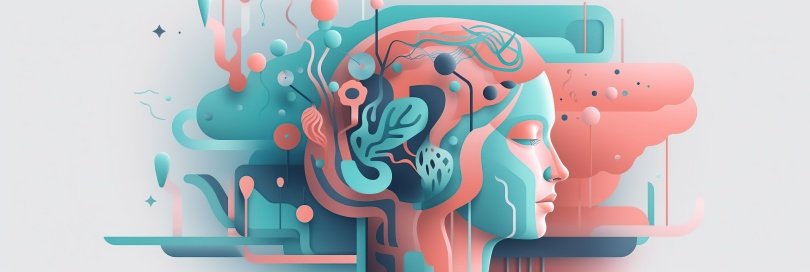Table of Contents
The Connection Between Dreams and Mental Health

How Dreams Reflect Our Emotional State
Dreams have long fascinated humanity, serving as both a source of wonder and a tool for introspection. One of the most intriguing aspects of dreams is how they reflect our emotional state, particularly our anxieties. Dreams about anxiety can vividly portray our subconscious worries and internal conflicts, making them a valuable resource for understanding and managing anxiety in our waking lives.
Research indicates that dreams often act as a mirror to our waking-life experiences and emotions. For instance, if you have experienced anxiety throughout the day, your dreams might manifest scenarios filled with stress or fear, essentially serving as an anxiety reflection. This concept is supported by numerous psychological studies that highlight the connection between our waking emotions and our dream content.
- A woman frequently dreams about missing important deadlines at work. This is a direct reflection of her daytime anxiety about job performance and fear of failure.
- A man regularly dreams of being chased. This symbolizes his subconscious worries about evading life responsibilities and dealing with overwhelming stress.
- A student often dreams about forgetting her exam materials, representing her fear of academic inadequacy and anticipated stress.
The Role of Subconscious Worries in Dreams
Understanding how subconscious worries surface in dreams can provide valuable insights into our mental health. For example, if you’re continuously dreaming about anxiety, it may indicate unresolved issues that need addressing. Managing anxiety in dreams can also involve practical steps such as journaling your dreams, practicing mindfulness, or seeking professional help.
Additionally, recognizing the signs in your dreams can help you pinpoint specific anxiety triggers. One effective method is to maintain a dream journal, noting recurring themes and emotions. This practice not only fosters a deeper connection with your inner self but also aids in identifying patterns that you might not be consciously aware of.
- Journaling dreams immediately upon waking preserves the emotional intensity and details.
- Mindfulness practices can help you become more conscious of your anxiety triggers, reflecting in calmer dream states.
- Therapeutic interventions, such as Cognitive Behavioral Therapy (CBT), can reframe negative dream content, easing subconscious worries.
By delving into our dreams and acknowledging the anxieties they reveal, we take a crucial step towards emotional well-being. It turns out that our nighttime reveries might just be the key to unlocking a deeper understanding of our mental health, offering both reflections and revelations in the journey of managing anxiety.
The Role of Recurring Dreams in Highlighting Stress and Anxiety
Recurring dreams can be a powerful indicator of underlying anxiety and stress. These dreams often repeat in similar scenarios and are laden with intense emotions, highlighting subconscious worries. Interestingly, dreams about anxiety can serve as a mirror, reflecting our internal turmoil and offering clues to unresolved emotional conflicts.
Experts believe that recurring dreams may arise when one faces persistent stress or anxiety. Dreams about anxiety often feature intense and vivid scenarios, such as being chased, falling, or losing control, which can leave individuals feeling unsettled upon waking. Managing anxiety in dreams involves understanding these scenarios as symbolic representations of our mental state.
- A person dreaming of being perpetually chased might be dealing with real-life pressures or deadlines that make them feel constantly pursued.
- A recurring dream of failing an exam could mirror worries about performance or fear of failure in one’s waking life.
- Anxiety reflection in dreams about losing control of a vehicle might represent feelings of helplessness or a lack of control over a current situation.
The Symbolic Nature of Recurring Dreams
These dreams often encapsulate our deepest anxieties and stressors. By paying attention to common themes and symbols, individuals can gain insight into their mental health. For instance, a person experiencing recurrent dreams of drowning might be overwhelmed by responsibilities or feeling engulfed by life’s demands. Recognizing these symbols helps to bring subconscious worries to the surface, making them easier to address in therapy or through personal introspection.
Interpreting recurring dreams can be a crucial step in managing anxiety. When these dreams are understood and acknowledged, they serve as a form of self-awareness, enabling individuals to identify stressors they might not have consciously recognized. This process not only aids in anxiety management but also fosters a deeper connection with one’s emotional and mental states.
Ultimately, while recurring dreams can be unsettling, they are a natural mechanism of the mind to highlight stress and anxiety. Properly interpreting and addressing these dreams can lead to significant improvements in mental health and overall well-being.
Analyzing Anxiety in Dreams

Common Anxiety Themes in Dreams and Their Interpretations
Anxiety frequently manifests in dreams, reflecting our subconscious worries and unresolved tensions. Common anxiety themes like falling, being chased, or losing control are more than mere nighttime fantasies; they provide valuable insights into one’s mental state. These dream patterns are powerful reflections of anxiety, resonating deeply with the issues we confront in our waking lives. By exploring these dream elements, we get a clearer picture of how our minds process and manage anxiety, albeit subconsciously.
- Falling is a prevalent dream theme linked to anxiety. Psychologists suggest that it symbolizes feelings of helplessness or lack of control. The sensation of falling awakens us, jarring us back to reality, mirroring our fears of instability or failure in life.
- Dreams about being chased often signify fleeing from something in our real lives that causes us stress or fear. This could be an unresolved problem, a deadline, or even deep-seated anxieties. It’s the mind’s way of signaling that these issues need addressing.
- Experiencing a loss of control in dreams could manifest as being unable to move or speak. These scenarios often point towards feeling overwhelmed or powerless in certain areas of one’s life, highlighting the need to regain control and communication.
Psychological Theories and Research Findings
To decode these anxiety-driven symbols, it’s crucial to refer to psychological theories. Sigmund Freud’s theory of dream interpretation, for example, emphasizes that dreams are manifestations of repressed desires and anxieties. Carl Jung adds another layer by suggesting that these themes are part of the collective unconscious, shared across humanity. Modern research also supports these ideas, acknowledging that dreams about anxiety are a natural mechanism to process emotional disturbances.
Real-life example cases further illustrate these points. Consider an individual who frequently dreams of missing important deadlines. This dream could reflect their subconscious anxiety about their performance and professional responsibilities. Recognizing this pattern can be the first step towards managing anxiety, both in dreams and waking life.
Understanding these dream patterns empowers individuals to take proactive steps in addressing their anxiety. Techniques such as journaling these dreams, discussing them with a therapist, and practicing mindfulness can all help in managing anxiety in both realms. By paying attention to these subconscious messages, one can better manage their mental health, setting the foundation for a more balanced and serene life.
Managing anxiety in dreams is not just about interpreting symbols but about taking actionable steps towards addressing the underlying causes. By leveraging the power of dreams, one can uncover hidden anxieties and begin the journey to mental wellness. Recognizing these subconscious reflections of anxiety equips us with the tools to confront and heal from these hidden fears.
Therapeutic Approaches to Address Dream-Induced Anxiety
Anxiety is a common experience that can manifest in various ways, including through our dreams. Individuals often encounter dreams about anxiety, reflecting their subconscious worries and fears. Managing anxiety in dreams requires tailored approaches that can reduce the adverse effects on mental health.
- Dream Journaling: Maintaining a dream journal can be a potent tool for managing anxiety in dreams. By writing down dreams, individuals can gain insight into their subconscious worries. For example, one might notice recurring themes of anxiety reflection, which can then be addressed consciously.
- Cognitive Behavioral Therapy (CBT): CBT is a structured form of therapy that helps individuals confront and manage anxiety. Through CBT, people learn to reframe negative thought patterns that appear in their dreams, thereby diminishing their impact. For instance, someone experiencing frequent anxiety-laden dreams about failure can work with a therapist to develop strategies for overcoming these fears.
- Mindfulness Practices: Mindfulness techniques, such as meditation and deep-breathing exercises, can help manage anxiety by fostering a sense of calm and reducing stress. These practices make it easier for individuals to deal with anxiety both in their waking life and in dreams. An example might be someone practicing mindfulness before bed to reduce the onset of anxiety dreams.
Successful Real-World Applications
Individuals have found success using these methods to manage dream-induced anxiety. One person’s experience with dream journaling revealed deep-seated fears of abandonment, which they subsequently addressed through CBT sessions. Another found that integrating mindfulness meditation into their nightly routine significantly reduced their anxiety reflection, resulting in more restful sleep. These real-world instances highlight the importance of effective therapeutic approaches to mitigate dream-induced anxiety and enhance overall mental well-being.
Summary
Dreams have long fascinated humanity, serving as both a source of wonder and a tool for introspection. Analyzing anxiety in dreams can reveal how they reflect our emotional state, particularly our subconscious worries. Dreams about anxiety can vividly portray internal conflicts, making them a valuable resource for managing anxiety in our waking lives.
Research shows that dreams often mirror our daily experiences and emotions. For instance, experiencing anxiety throughout the day can manifest in dreams filled with stress or fear. This connection is highlighted in psychological studies that emphasize the link between waking emotions and dream content.
- A woman frequently dreaming about missing deadlines at work reflects her daytime anxiety about job performance.
- A man dreaming of being chased indicates worries about evading life responsibilities and overwhelming stress.
- A student dreaming of forgetting exam materials represents academic inadequacy and anticipated stress.
The Role of Subconscious Worries in Dreams
Understanding how subconscious worries surface in dreams can provide valuable insights into our mental health. Continuous anxiety dreams may indicate unresolved issues needing attention. Managing anxiety in dreams can involve practical steps like journaling, mindfulness, or professional help.
Additionally, recognizing anxiety reflection in dreams can help pinpoint specific triggers. Maintaining a dream journal fosters a deeper connection with the inner self and aids in identifying subconscious patterns.
- Journaling dreams upon waking preserves emotional intensity and details.
- Mindfulness practices help become more conscious of anxiety triggers.
- Cognitive Behavioral Therapy (CBT) can reframe negative dream content.
Ultimately, by delving into our dreams and acknowledging the anxieties they reveal, we take a crucial step towards emotional well-being. Our nighttime reveries offer reflections and revelations essential in the journey of managing anxiety.
FAQ – Analyzing Anxiety in Dreams
How can recurring themes in dreams signify underlying anxiety?
Recurring themes in dreams can often highlight unresolved issues that cause stress or anxiety in one’s waking life, acting as the subconscious mind’s way of processing these emotions. For example, continuously dreaming about falling might reflect feelings of lack of control or fear of failure in daily situations. Such repetitive dream patterns serve as signals to recognize and address underlying mental health concerns, potentially helping to alleviate anxiety through conscious awareness and proactive steps.
How can recurring stressful dreams indicate specific sources of ongoing anxiety in a person’s life?
Recurring stressful dreams can often reflect underlying anxiety related to specific life stressors or unresolved emotional issues. These dreams act as a mirror to our subconscious, highlighting areas of persistent concern or conflict that might not be fully acknowledged during waking hours. For example, someone frequently dreaming about being unprepared for an exam might be grappling with feelings of inadequacy or pressure in their professional life.
How can recurring dreams involving specific stressful scenarios indicate underlying anxiety issues?
Recurring dreams with specific stressful scenarios often function as a psychological signal, highlighting unresolved anxieties and emotional tensions present in one’s daily life. These dreams reflect the brain’s attempt to process and cope with stress, by repeatedly confronting the distressing situation in a safe, unconscious environment. Addressing the root causes of anxiety through therapy or stress management techniques can alleviate such recurring dreams and improve mental well-being.




